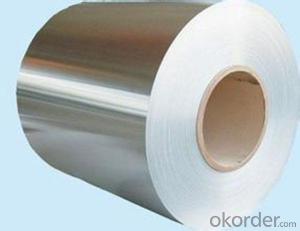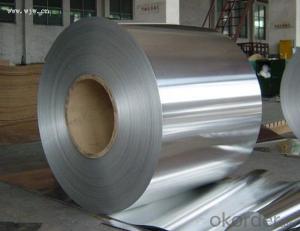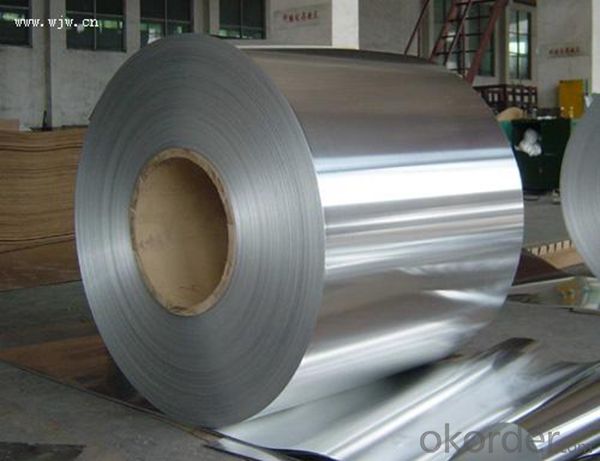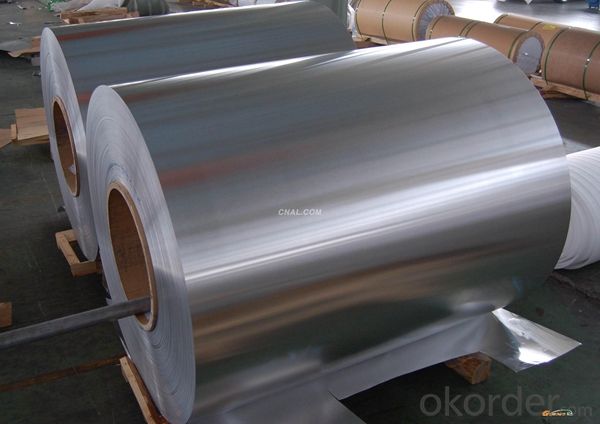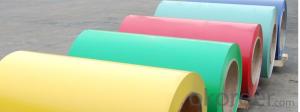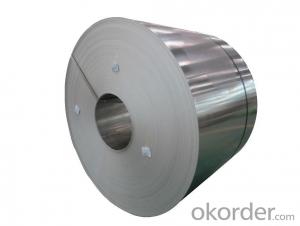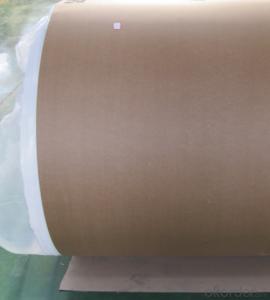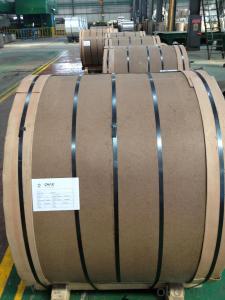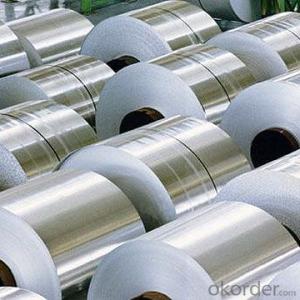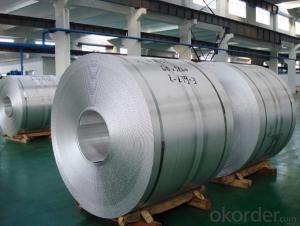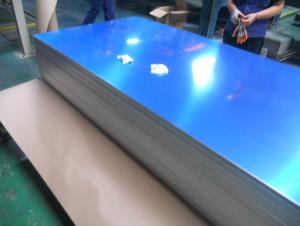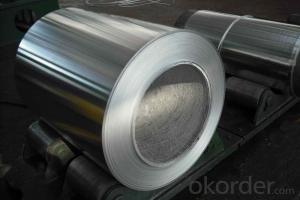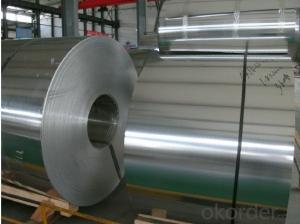H-34 Aluminum Sheets - CC Aluminium Cast Coil for Further Rolling
- Loading Port:
- Shanghai
- Payment Terms:
- TT OR LC
- Min Order Qty:
- 5 m.t.
- Supply Capability:
- 1000 m.t./month
OKorder Service Pledge
OKorder Financial Service
You Might Also Like
Specification
1. Structure of CC Aluminium Cast Coil for further rolling Description
CC Aluminium Cast Coil for further rolling is one semi-finished aluminium material. This coil can be rolled down to aluminium coil,sheet,circle ect. The alloy AA1050 is widly used in building, industry ect. Its weight is much lower than steel. So many customers choosed aluminium material instead of steel.
2. Specification of CC Aluminium Cast Coil for further rolling
Aluminum Coil/Sheet | |
Main Specification | |
Alloy | AA1xxx (AA1050, AA1060, AA1070, AA1100 etc.) |
AA3xxx (AA3003, AA3004, AA3005, AA3105 etc.) | |
AA5xxx, AA6XXX (AA5052,AA5083, AA5754, AA6061, AA6062 etc.) | |
AA8xxx(AA8011, AA8006 etc.) | |
Temper | F |
Thickmess | 0.01mm-100mm |
Width | 30mm-1700mm |
Standard | GB/T 3880-2006/ASTM |
Special specification is available on customer's requirement | |
3. Application of CC Aluminium Cast Coil for further rolling
(1).Interior: wall cladding, ceilings, bathrooms, kitchens and balconies, shutters, doors...
(2).Exterior: wall cladding, facades, roofing, canopies, tunnels,column covers , renovations...
(3).Advertisement: display platforms, signboards, fascia, shop fronts...
4. Feature of CC Aluminium Cast Coil for further rolling
Surfact Quality :
Be free from Oil Stain, Dent, Inclusion, Scratches, Stain, Oxide Dicoloration, Breaks, Corrosion, Roll Marks, Dirt Streaks and other defect which will interfere with use,
Mechenical Property:
Chemical Composite and Mechanical Property
5. Certificate of CC Aluminium Cast Coil for further rolling
SGS and ROHS(if client request, paid by client), MTC(plant provided), Certificate of Origin(FORM A, FORM E, CO), Bureau Veritas and SGS (if client request, paid by client), CIQS certificate
6. Image of CC Aluminium Cast Coil for further rolling 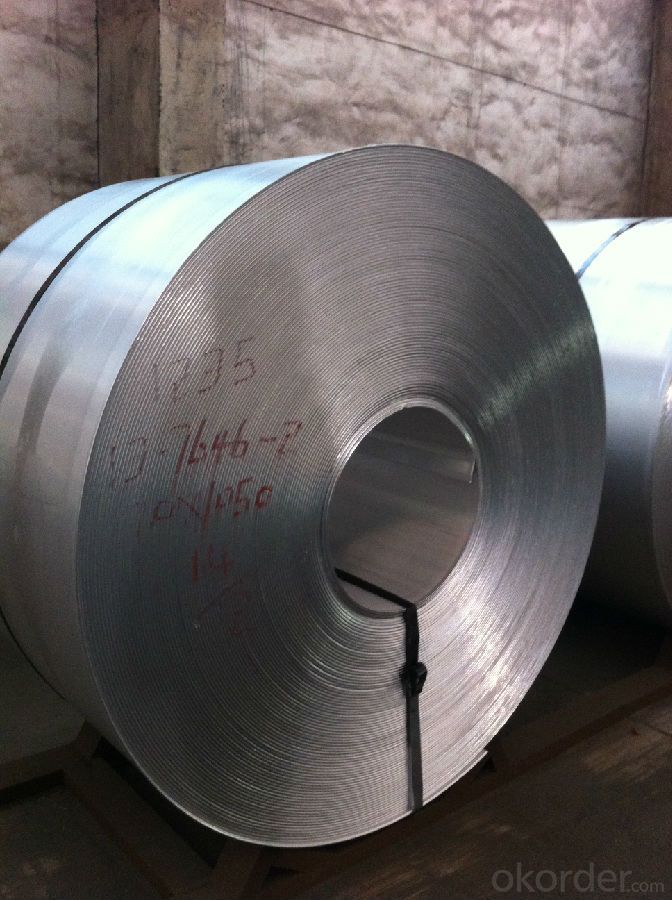
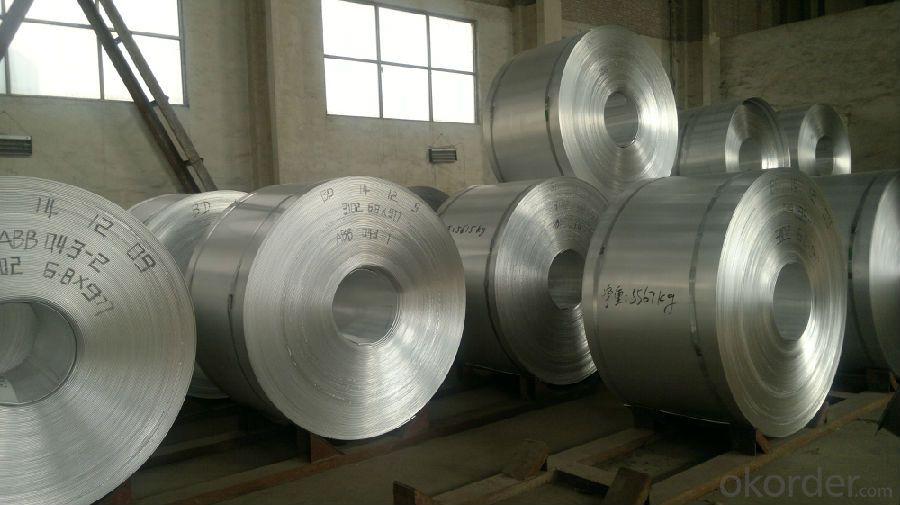
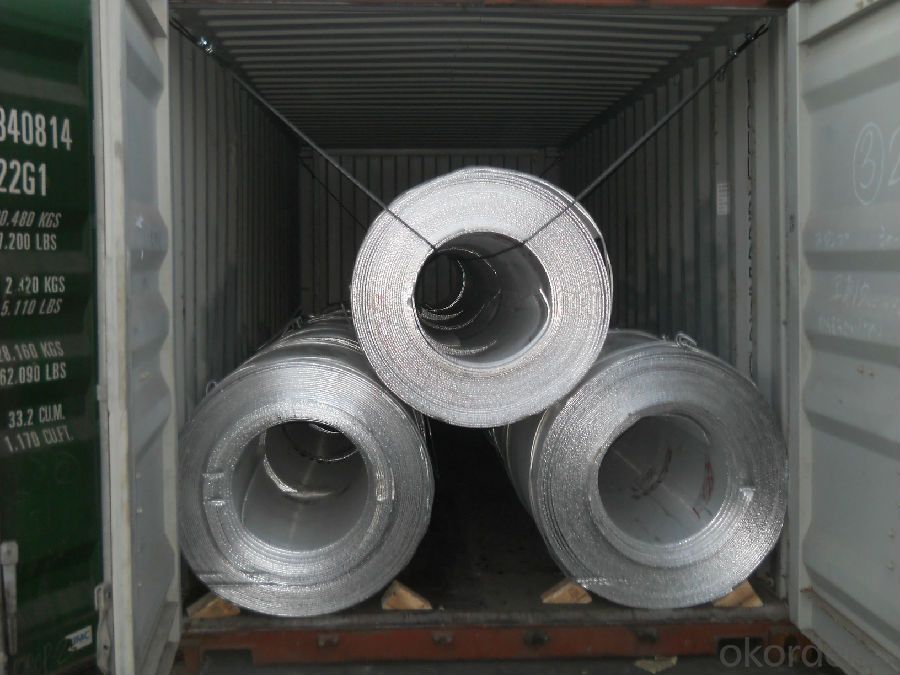
7. Package and shipping of CC Aluminium Cast Coil for further rolling
First, plastic cloth with drying agent inside; Second, Pearl Wool ; Third, wooden cases with dry agent , fumigation wooden pallets, aluminum surface could cover blue PVC film
8. FAQ
1) What is the delivery time?
Depends on actual order, around 20 to 35 days
2) What is the QC system:
We have QC staff of 20 persons and advanced equipment, each production is with MTC traced from Aluminum ingot lot.
3) What market do you mainly sell to?
Australia, America, Asia, Middle East, Western Europe, Africa etc
- Q: How do aluminum sheets perform in terms of fire resistance?
- Aluminum sheets possess outstanding fire resistance characteristics. This material, aluminum, is non-combustible, meaning it does not burn or contribute to the propagation of fire. In fact, aluminum has a remarkably high melting point of approximately 660 degrees Celsius (1220 degrees Fahrenheit), rendering it highly resistant to heat. When subjected to fire, aluminum generates a thin layer of oxide on its surface, creating a protective barrier that hinders further oxidation. This oxide layer is highly stable and effectively prevents the material from igniting or emitting flammable gases. Moreover, aluminum sheets exhibit low thermal conductivity, which reduces the ease with which they transfer heat compared to other metals. This property further enhances their fire resistance. These fire-resistant attributes position aluminum sheets as a preferred choice in a wide range of applications where fire safety is a primary concern, including building construction, aerospace industry, automotive manufacturing, and electrical enclosures. Aluminum sheets are commonly utilized in exterior cladding, roofing, and insulation systems, providing an additional layer of safeguard against fire hazards. It is essential to acknowledge that while aluminum sheets themselves possess high fire resistance, the overall fire performance of a structure or system relies on factors such as design, installation, and the use of other materials in conjunction with aluminum sheets. Therefore, it is vital to adhere to appropriate fire safety regulations and guidelines to ensure optimal fire resistance in any given application.
- Q: Can aluminum sheets be used in aerospace applications?
- Yes, aluminum sheets can be used in aerospace applications. Aluminum is a widely used material in the aerospace industry due to its excellent combination of strength, lightweight properties, and resistance to corrosion. It is used in various components of aircraft, such as the fuselage, wings, and structural panels, where weight reduction is critical for fuel efficiency and performance. Additionally, aluminum sheets can be easily fabricated and formed into complex shapes, making them suitable for various manufacturing processes in the aerospace industry.
- Q: What are the different types of finishes used for decorative aluminum sheet?
- There are several different types of finishes that can be used for decorative aluminum sheet to enhance its appearance and provide added protection. Some of the most common finishes include: 1. Mill finish: This is the standard finish that aluminum sheets have when they come straight from the mill. It has a smooth, shiny appearance but lacks any additional treatments or coatings. 2. Anodized finish: This finish involves an electrochemical process that creates a durable, corrosion-resistant layer on the surface of the aluminum. Anodized finishes can be clear or colored, and they provide a decorative, matte appearance. 3. Brushed finish: Also known as satin finish, this type of finish involves brushing the aluminum sheet with a fine abrasive material to create a pattern of fine lines or scratches. It gives the sheet a textured, non-reflective surface that hides any imperfections. 4. Polished finish: This finish involves polishing the aluminum sheet with a series of abrasive materials to create a smooth, reflective surface. It gives the sheet a shiny, mirror-like appearance and is often used for decorative purposes. 5. Painted finish: Aluminum sheets can also be painted with various types of coatings to provide different colors and finishes. These coatings can be applied through techniques such as powder coating, liquid painting, or coil coating, and they offer both decorative and protective benefits. 6. Embossed finish: In this type of finish, the aluminum sheet is pressed with a pattern or design to create a three-dimensional surface. Embossed finishes can vary in depth and detail, and they add texture and visual interest to the sheet. These are just a few examples of the different types of finishes used for decorative aluminum sheet. Each finish offers its own unique look and benefits, allowing for a wide range of design possibilities.
- Q: I am doing a project on Aluminum it has 13 protons just to make sure everyones on the same page. How much of it is left or exsits? Also how does it behave?
- As Vincent noted, aluminium is an abundant element in the earth's crust. It occurs in all clay minerals. Its main ore, bauxite(a mixture of aluminium hydroxides) is still available in vast deposits; particularly in Australia and South America. Aluminium is a reactive element, and so is not found in nature in the elemental form. Aluminium is a metal, and an amphoteric substance; that is; it reacts with both acids and bases.
- Q: Can aluminum sheets be used for battery enclosures?
- Yes, aluminum sheets can be used for battery enclosures. Aluminum is commonly used in battery enclosures due to its lightweight, corrosion-resistant, and electrically conductive properties. It provides a protective casing for the battery, ensuring safety and efficient performance.
- Q: Can aluminum sheets be used for reflective purposes?
- Aluminum sheets possess the capability to serve reflective purposes. Being a metal with exceptional reflectivity, aluminum showcases both a glossy and sleek surface. Its reflectivity index is considerably high, rendering it an impeccable substance for the reflection of both light and heat. Numerous reflective functions are often accomplished through the usage of aluminum sheets, including mirror production, solar panel assembly, lighting fixture manufacture, and insulation creation. Furthermore, owing to its reflective attributes, aluminum sheets are extensively employed in the construction sector to enhance energy efficiency by reflecting sunlight and curtailing heat absorption.
- Q: Are aluminum sheets suitable for electrical conductors?
- Yes, aluminum sheets are suitable for electrical conductors. Aluminum is often used as a conductor in various electrical applications due to its excellent conductivity, lightweight nature, and relatively low cost compared to other metals like copper. It has approximately 61% conductivity of copper, making it an efficient conductor for most electrical purposes. Aluminum sheets are commonly used in power transmission lines, electrical wiring, bus bars, and numerous other electrical components. However, it is important to note that aluminum has a higher resistance compared to copper, which means it may require larger cross-sections to carry the same current. Additionally, aluminum has a lower melting point than copper, so proper care must be taken to avoid overheating when using aluminum sheets as electrical conductors.
- Q: Can 101 aluminum sheets be anodized?
- Yes, 101 aluminum sheets can be anodized.
- Q: will it influence powder injection effect after wiping the oil contamination on the surface of aluminum sheet?
- It’s possible, there are several problems: 1, workers won’t wipe it thoroughly and fully, so you can wipe it after soaking. 2, the wiping efficiency is low, and we can use ultrasonic to clean it. 3, the water is poisonous and harmful to environment and workers’ health, so you can use water base to clean it, environmental and non-poisonous. Of course, if you really want to change, you can use detergent special for aluminum materials cleaning of our company, Changlvfeng chemical industry company. a, its PH value is 6.8-7.2 and it is totally an neutral liquid. b, good material applicability, detergent invented for aluminum materials. c, good degreasing ability, it has a good degreasing function for various oil contamination in processing and has no effect on material.
- Q: Can aluminum sheet be used for electronic components?
- Indeed, aluminum sheet is a viable option when it comes to electronic components. This versatile material boasts numerous advantages for electronic applications. Not only is it lightweight, but it also exhibits exceptional thermal conductivity and corrosion resistance. These characteristics render it suitable for a wide range of electronic components, including heat sinks, enclosures, connectors, and printed circuit boards (PCBs). The machinability, formability, and weldability of aluminum sheets further enable efficient manufacturing processes. Moreover, aluminum proves to be a cost-effective alternative to materials like copper or steel. Nevertheless, it is crucial to acknowledge that aluminum may not be suitable for all electronic components, particularly those necessitating high electrical conductivity or magnetic shielding.
Send your message to us
H-34 Aluminum Sheets - CC Aluminium Cast Coil for Further Rolling
- Loading Port:
- Shanghai
- Payment Terms:
- TT OR LC
- Min Order Qty:
- 5 m.t.
- Supply Capability:
- 1000 m.t./month
OKorder Service Pledge
OKorder Financial Service
Similar products
Hot products
Hot Searches
Related keywords
